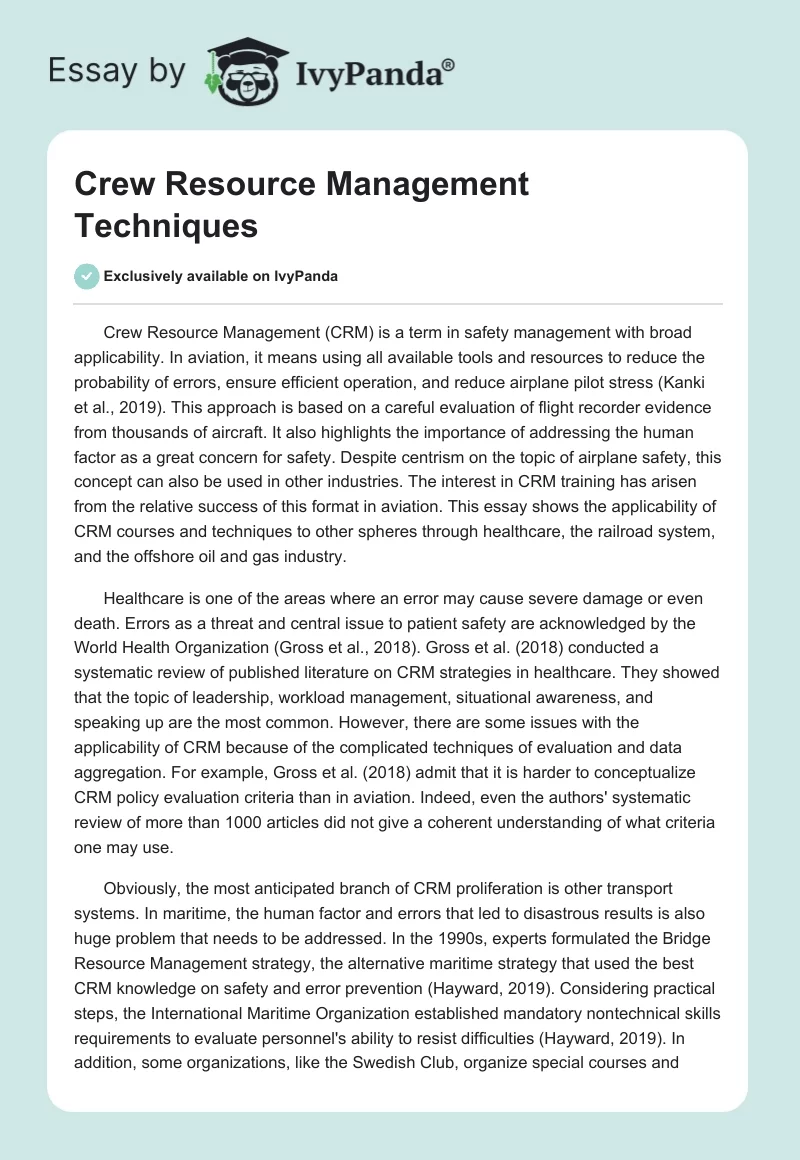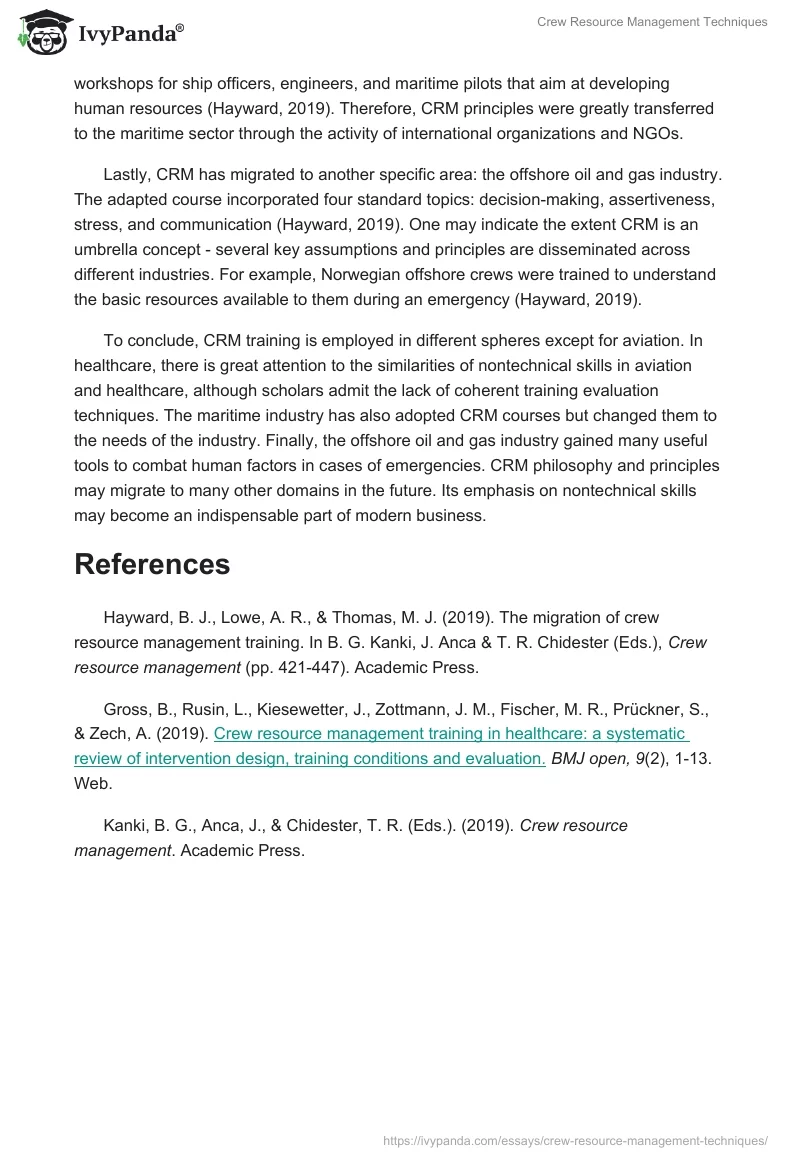Crew Resource Management (CRM) is a term in safety management with broad applicability. In aviation, it means using all available tools and resources to reduce the probability of errors, ensure efficient operation, and reduce airplane pilot stress (Kanki et al., 2019). This approach is based on a careful evaluation of flight recorder evidence from thousands of aircraft. It also highlights the importance of addressing the human factor as a great concern for safety. Despite centrism on the topic of airplane safety, this concept can also be used in other industries. The interest in CRM training has arisen from the relative success of this format in aviation. This essay shows the applicability of CRM courses and techniques to other spheres through healthcare, the railroad system, and the offshore oil and gas industry.
Healthcare is one of the areas where an error may cause severe damage or even death. Errors as a threat and central issue to patient safety are acknowledged by the World Health Organization (Gross et al., 2018). Gross et al. (2018) conducted a systematic review of published literature on CRM strategies in healthcare. They showed that the topic of leadership, workload management, situational awareness, and speaking up are the most common. However, there are some issues with the applicability of CRM because of the complicated techniques of evaluation and data aggregation. For example, Gross et al. (2018) admit that it is harder to conceptualize CRM policy evaluation criteria than in aviation. Indeed, even the authors’ systematic review of more than 1000 articles did not give a coherent understanding of what criteria one may use.
Obviously, the most anticipated branch of CRM proliferation is other transport systems. In maritime, the human factor and errors that led to disastrous results is also huge problem that needs to be addressed. In the 1990s, experts formulated the Bridge Resource Management strategy, the alternative maritime strategy that used the best CRM knowledge on safety and error prevention (Hayward, 2019). Considering practical steps, the International Maritime Organization established mandatory nontechnical skills requirements to evaluate personnel’s ability to resist difficulties (Hayward, 2019). In addition, some organizations, like the Swedish Club, organize special courses and workshops for ship officers, engineers, and maritime pilots that aim at developing human resources (Hayward, 2019). Therefore, CRM principles were greatly transferred to the maritime sector through the activity of international organizations and NGOs.
Lastly, CRM has migrated to another specific area: the offshore oil and gas industry. The adapted course incorporated four standard topics: decision-making, assertiveness, stress, and communication (Hayward, 2019). One may indicate the extent CRM is an umbrella concept – several key assumptions and principles are disseminated across different industries. For example, Norwegian offshore crews were trained to understand the basic resources available to them during an emergency (Hayward, 2019).
To conclude, CRM training is employed in different spheres except for aviation. In healthcare, there is great attention to the similarities of nontechnical skills in aviation and healthcare, although scholars admit the lack of coherent training evaluation techniques. The maritime industry has also adopted CRM courses but changed them to the needs of the industry. Finally, the offshore oil and gas industry gained many useful tools to combat human factors in cases of emergencies. CRM philosophy and principles may migrate to many other domains in the future. Its emphasis on nontechnical skills may become an indispensable part of modern business.
References
Hayward, B. J., Lowe, A. R., & Thomas, M. J. (2019). The migration of crew resource management training. In B. G. Kanki, J. Anca & T. R. Chidester (Eds.), Crew resource management (pp. 421-447). Academic Press.
Gross, B., Rusin, L., Kiesewetter, J., Zottmann, J. M., Fischer, M. R., Prückner, S., & Zech, A. (2019). Crew resource management training in healthcare: a systematic review of intervention design, training conditions and evaluation. BMJ open, 9(2), 1-13. Web.
Kanki, B. G., Anca, J., & Chidester, T. R. (Eds.). (2019). Crew resource management. Academic Press.


